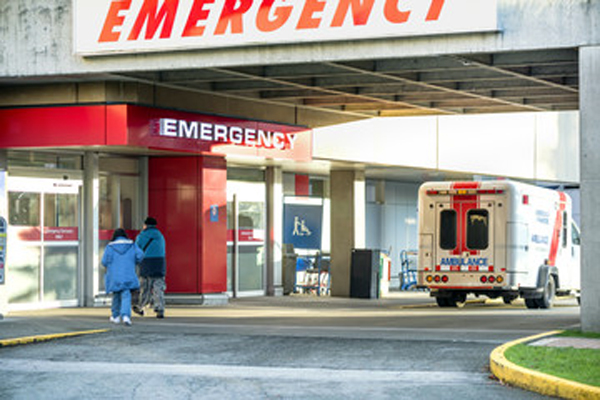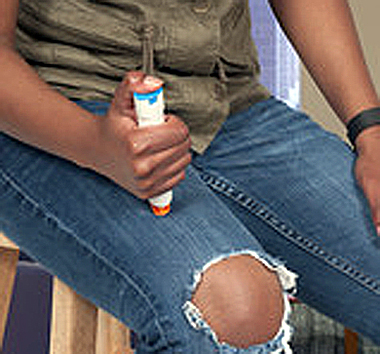The new recommendations come as patients suffering severe allergic reactions fear visiting emergency departments
COVID-19 has created new anxieties and risks for individuals seeking emergency care, including those experiencing severe allergic reactions known as anaphylaxis.
In an editorial published April 21 in the The Journal of Allergy and Clinical Immunology: In Practice (JAIP), USF Health allergist Thomas Casale, MD, and coauthors outline why the traditional recommendations for emergency care related to anaphylaxis must change during the COVID-19 pandemic. Dr. Casale is professor of medicine and pediatrics at the USF Health Morsani College of Medicine and chief medical advisor for operations with Food Allergy Research & Education (FARE).
To ensure optimal care following an anaphylactic reaction, experts typically advise patients to seek emergency care after the patient or a caregiver administers an epinephrine auto-injector to treat trouble breathing, swelling, tightness of throat, dizziness and other serious symptoms of anaphylaxis. In ordinary times, a food allergy reaction sends one person in the U.S. to the emergency room every three minutes.
But these are not ordinary times.
The JAIP authors suggest that, given the significant risk of exposure to COVID-19 while seeking emergency care, in-home treatment may be the safer course of action for some food allergy patients. The new paper offers guidance on how allergists might advise patients to manage anaphylaxis at home if their reaction symptoms resolve following treatment with epinephrine.
“Emergency departments are overwhelmed by the COVID-19 crisis and an anaphylactic event is very serious, but at-home care is possible in many situations so long as extra precautions are taken on behalf of both patients and caregivers,” Dr. Casale said. “It is our hope that in pivoting where possible we can protect food allergy patients nationwide while simultaneously slowing the spread of this virus.”
The revised anaphylaxis management algorithm outlined suggests patients experiencing anaphylaxis follow these steps:
- Inject epinephrine immediately.
- Ask for help from a housemate or neighbor, and lay down with legs elevated near an unlocked doorway
- Administer oral antihistamine, administer albuterol for respiratory symptoms if prescribed and available, and monitor symptoms.
- If symptoms do improve, closely monitor for 4-6 hours and notify a physician on a non-urgent basis.
- If symptoms do not improve or they worsen, administer epinephrine once more. If still no improvement, activate emergency services.
It is critical that food allergy patients and families consult their physicians before making changes to their personal care plan, Dr. Casale emphasized.
Food allergies affect more than 32 million Americans, some of which are life-threatening and can cause anaphylaxis and death, said Lisa Gable, chief executive officer of FARE. “Our team of medical experts is closely monitoring the pandemic and will revise anaphylaxis management recommendations as necessary, always keeping the health and safety of patients a top priority.”
For more information on the revised anaphylaxis management algorithm, please click here.



